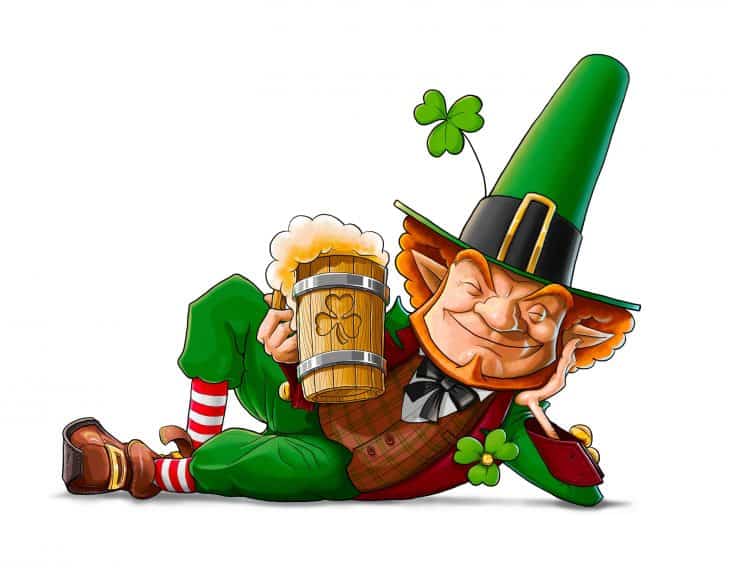
During St. Patrick Day, elves and gnomes have the right to be green with envy because leprechauns get all the attention. These magical creatures originate from Ireland, but people in the United States often associate them with St. Patrick’s Day and a box of Lucky Charm cereals. The leprechaun is one of the most popular and beloved good luck symbols around the world. No matter what country you visit, when it rains, you will surely find someone staring at the sky, wondering if there is a leprechaun with a pot of gold at the end of the rainbow.
Leprechauns have been a longstanding aspect of Irish myths and lore, and their story has been around for centuries! Even the entertainment industry had developed an intense fascination with the creatures! There are nine movies starring leprechauns. Out of that list, some of them even go back as far as the ’90s and ’50s! A word of caution for all the leprechaun lovers, though, not all of the movies portray them in a good light, especially the 1993 film Leprechaun, which also introduced people to Jennifer Aniston.
Despite their reputation for being quite mischievous, we cannot blame you if you want to understand these mythical creatures better, as they are indeed very interesting. One of the best ways to know them more is by checking out our list of leprechaun facts!
In our leprechaun facts list, you will know about the magical beings’ origins and why they continue to endure the ever-changing cultures of the world.
- Legends say leprechauns are fairies that are as tall as three-year-olds.
- A leprechaun is said to be a mythical creature but accounts tell that they were actually seen in the 700s.
- According to the locals at Carlingford, Ireland, there are 236 leprechauns in their region.
- A law in 2009 made sure that leprechauns and their species are protected.
- These species were said to be living in Leprechaun Park back in 1947.
- A leprechaun is usually a small bearded man wearing a green hat and suit.
- Stories say that leprechauns are shoemakers, spending most of their lives fixing and making shoes.
- It is believed that leprechauns are fond of playing tricks on those they meet.
- There are stories that leprechauns have their own pots of gold hidden deep in the countryside of Ireland.
- It’s hard to catch a leprechaun as they are fast and mischievous and can vanish in an instant.
- William Allingham was an Irish poet who wrote about leprechauns wearing green which is an image that stuck to this day.
- A small town in Ireland holds an annual leprechaun hunting event.
- Revelers of St. Patrick’s Day would pinch those who would not wear green during the celebration.
- Leprechaun caverns in Ireland are perfect for visitors who would like to know more about their tales and their part in history.
- Dublin’s National Leprechaun Museum could give you thorough information about their first sightings up to their relevance today.
- They say that when leprechauns are near, you can hear them tapping nails in shoes using a hammer.
- Legend has it that there are no female leprechauns.
- Some sources say that the word leprechaun comes from luchorpán, an Irish word meaning small body.
- According to its folklore, a leprechaun must give away his treasure to anyone who can capture him.
- The smallest park in the world, the Mill Ends Park in Oregon, is the only leprechaun colony west of Ireland.
Legends say that leprechauns were already in Ireland before the arrival of humans.
One of the least known leprechaun facts is that they are fairies. Although these creatures may not be what you have in mind when you hear the word fairies, it’s what’s established about them. It’s said that they are from a family of Tuatha Dé Danann, magical beings serving Danu, a Gaelic Goddess. Legend says that this group was already living in Ireland even before humans discovered the land.
A journalist started the story of a leprechaun colony.
Dick Fagan was a journalist in Oregon. After seeing a small home in a block of concrete where there was once a light pole, he began writing a newspaper column about it. The stories were about Patrick O’Toole, the head leprechaun who lived in the area. Of course, the details were all in the journalist’s head. But he added flowers and stuff near the hole and made a sign, making the area the smallest park in the world. In 1976, it became the official park of the city for the celebration of St. Patrick’s Day. Through the years, contributors have already added improvements in the park such as a swimming pool and benches. Today, it’s known as the Mill Ends Park.
Leprechauns are the unwelcomed offspring of the fairy community.
Stories claim that leprechauns are solitary, untrusting, and grouchy creatures. That’s because they are said to be the rejected children of fairies. Probably explains the unfriendly and lonesome characteristic that they have. Also, you cannot find a female leprechaun. Mainly because there is no way for men to procreate as they have been banished from their colony and family of fairies. This is definitely one of the dismal but interesting leprechaun facts on this list.
The fairy world has leprechauns as bankers.
It’s said that leprechauns are already wealthy creatures, which is why they act as bankers of the fairy world. They make sure that extravagant fairies do not spend their gems all at once.
They may be known for their pot of gold and money, but legend says that they got it through hard work. But what do they do? It’s known that leprechauns are earnest shoemakers, pouring everything they have to ensure they make only the best shoes. You could say that they nail their shoes all the time, hence why they are highly paid.
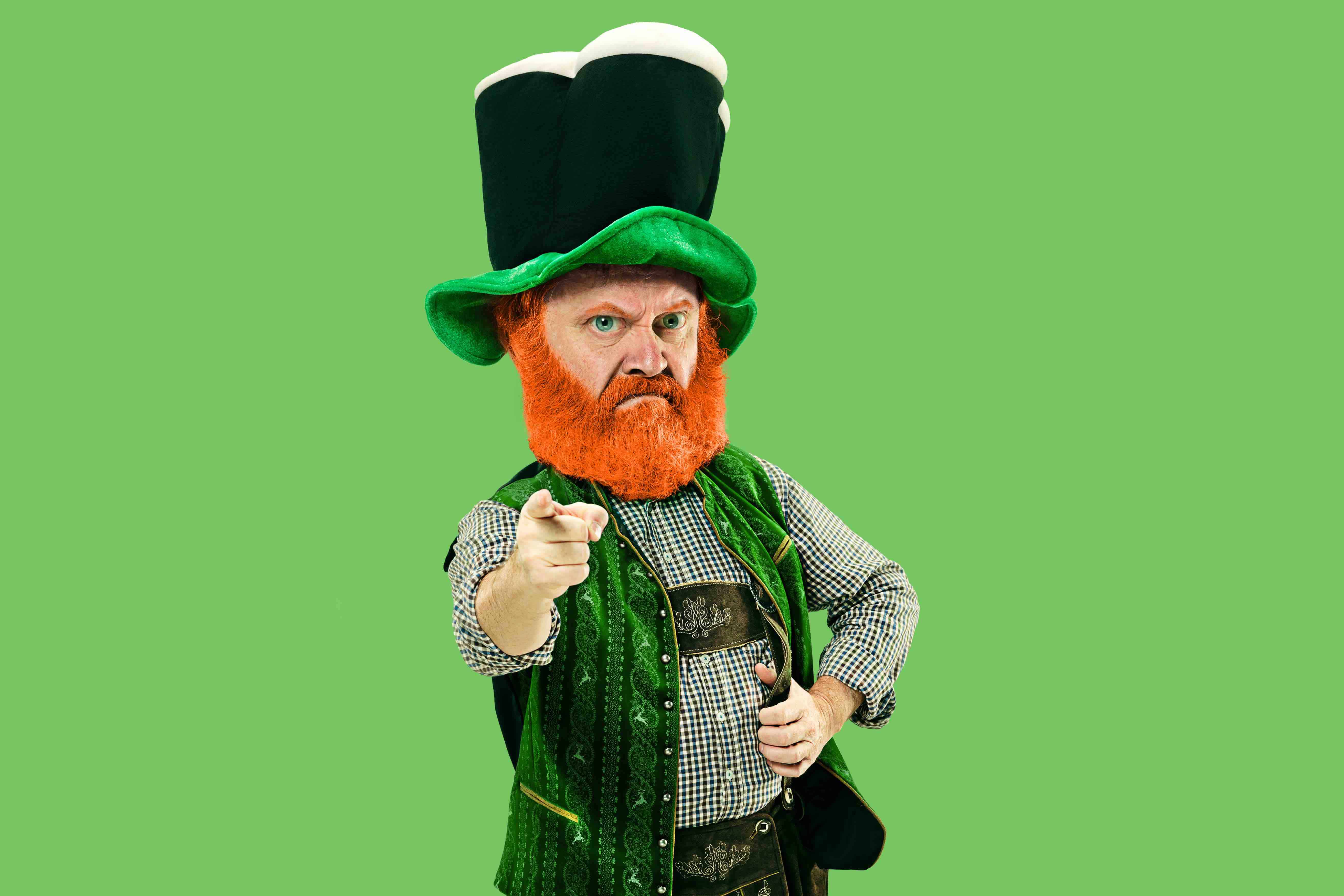
There was a claim of finding the remains of a leprechaun in a mountain.
A businessman from Ireland said that he had the evidence supporting that leprechauns were real. In 1989, he heard a scream coming from a wishing well. Inside, he found gold coins, a tiny suit, and bones. It’s said that this evidence is now in a glass case and visitors can see it for themselves.
With this propagated, an annual celebration was born. There’s what they call a leprechaun hunt with over 100 ceramic leprechauns scattered in the mountains for the hunters to find. Those who would like to join would need to get a “hunter’s license” costing six pounds. Usually, the pots that come with the ceramic leprechauns contain treasures even an occasional real gold bar. These are those leprechaun facts that will truly amaze you.
Leprechauns once wore red.
Before the late 1700s, leprechauns were known to be wearing red hats and suits instead of green. Early accounts of their appearance described them sporting three-cornered hats and red clothes. The image of them wearing green only stuck after William Allingham’s poem.
European Law protects leprechauns.
Since the claim of having discovered the remains of a leprechaun, the Slieve Foye mountain caverns have since been protected. The European Union granted the site heritage status in 2009. They believe that there are still leprechauns living in the area, 236 of them actually. With these, leprechauns are said to have a protected sanctuary just for them in the mountain. The law also protects flora and fauna in the area to maintain safe land biodiversity.
Clurichauns are the troublesome cousins of leprechauns.
Mythical stories claim that clurichauns are the leprechauns retained their red outfits, but others also see them as a different kind. Often described as surly and drunk creatures, they are said to like raiding and wiping out wine cellars. They are often portrayed riding animals at night, on their way to make some trouble.
As said, there are speculations that clurichauns are only leprechauns that transform into different species at night. After a long day, these fairies drink and become so tipsy that they change altogether.
Leprechauns are sneaky creatures.
We can all understand why they’re trying to be sneaky. That’s because stories say that when they are around, humans are always trying to steal their gems and gold. Legend has it that when you successfully catch a leprechaun, he’s supposed to give you all his treasures. But it’s never easy to catch one as they are agile and of course, full of magic. It’s said that you must not take your eyes off them or they will disappear.
In one of those Irish stories, a man was able to catch a leprechaun. Of course, the fairy was forced to divulge the location of his gold. The little fairy pointed to a tree and the man quickly tied a red bandana into the branch so that he could go home and fetch his shovel to dig. Upon returning, he was disappointed to see that all the trees in the area had the same scarf. Sneaky and wise go hand in hand in all these leprechaun facts.
Kindness can transform leprechauns into generous fairies.
When you are constantly chased for your treasure and gold, it could certainly take a toll on your trust in people. This is the reason why leprechauns are often secretive and distrustful. But did you know that they can also loosen their strings if you show them kindness? There was once a story about a nobleman whose castle is already falling apart. While riding his horse, he saw a leprechaun carrying a bag of shoes. He offered the bearded fairy a ride. Upon returning to his castle, he found it filled with gold from the ground to the ceiling.
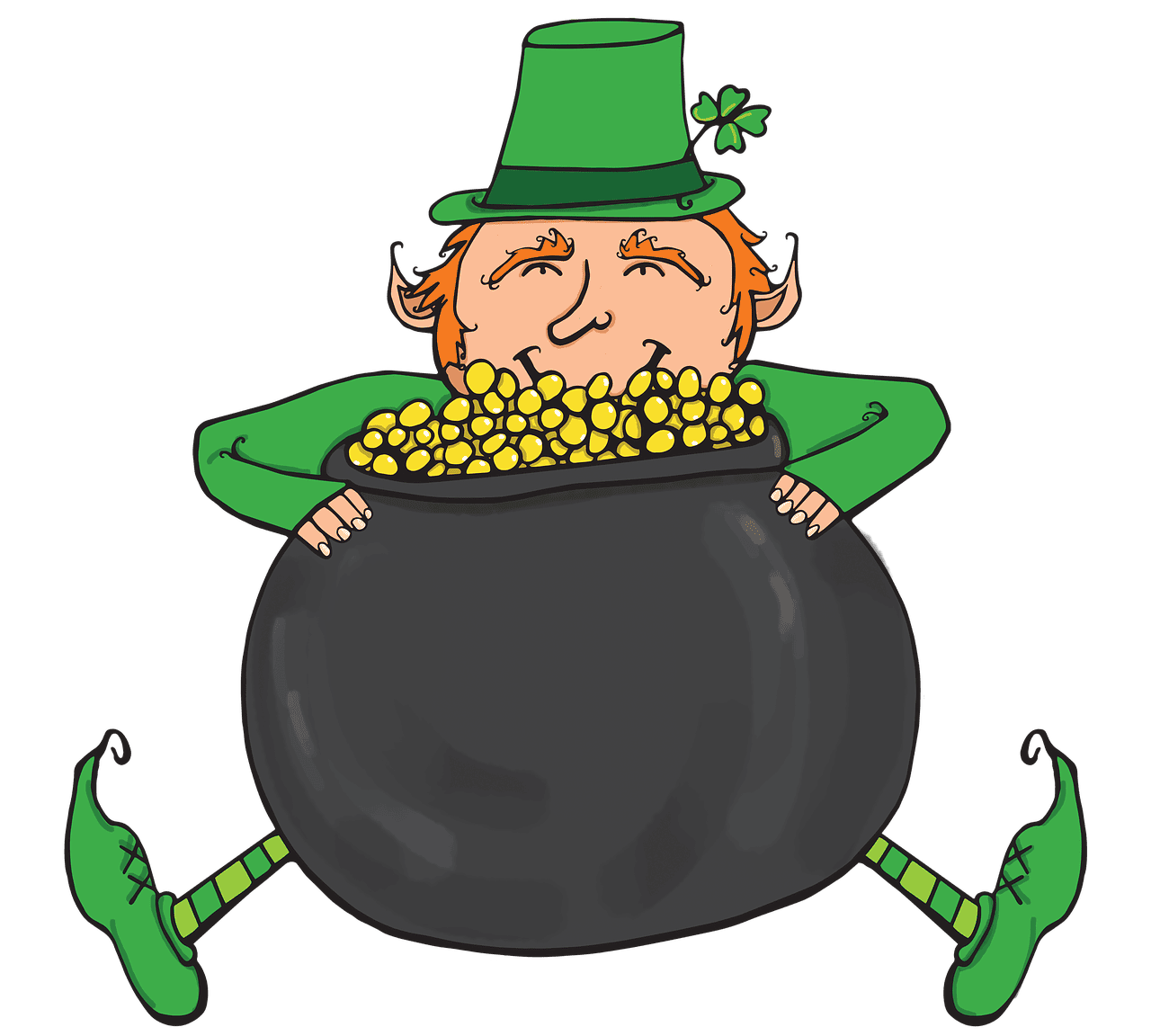
St. Patrick's Day is an excuse for you to wear leprechaun clothes.
St. Patrick is Ireland’s patron saint. It’s a national holiday in Ireland and everyone gets to celebrate it with special foods, drinking, parades, music, and leprechaun costumes. People wear lots of green outfits even though it’s considered a religious celebration in the country. There are annual marathons that encourage people to wear leprechaun costumes. The celebration is hitting two birds in one stone. When you join, you will definitely get in the spirit of the St. Patrick’s Day celebration while raising money for charity.
There are chances that leprechauns can live underwater.
In one of the earliest folktales featuring leprechauns, it’s said that they live underwater. In the story, Ulster’s King Fergus mac Léti fell asleep on the beach shores. He wakes up finding three little bodies dragging him to their lair under the sea. Their attempt was unsuccessful as the King was able to capture them. The leprechauns gave the King three wishes in exchange for their freedom. The story gives the reader an idea that these bearded fairies are also sea-dwellers. However, modern myths do not include this speculation too often. It’s one of those leprechaun facts that are not commonly discussed.
You can be creative on St. Patrick's Day by making leprechaun traps.
Aside from the marathon, hunts, and dance competitions, you can also enjoy St. Patrick’s Day in the comfort of your home. You can make a leprechaun trap with your kids to celebrate the holiday. Although there’s still no reported case of anyone catching one yet, it would be a fun way to showcase your creative juices. All you need to do is get a shoebox and design it all the way through. Who knows, maybe a leprechaun would find its way in your creative lair.
Leprechauns may have come from a divine heritage.
Lugh is an Irish deity. He was a fierce warrior and a sun god. Known as the god of thunderstorms, he’s often associated with lynx, ravens, and crows. But after the domination of Christianity in the country, the importance of Lugh diminished. The god was demoted to just a folklore character who makes shoes with the name Lugh Chromain. Because of the common belief that leprechauns made fine shoes day and night, they became associated with Lugh who was once a god.
A cereal company features a leprechaun logo.

Lucky Charms is a breakfast cereal from General Mills. The company has been around since 1964 and their cereals consist of oat pieces and marshmallow bits. The well-known cereal logo and label is Lucky or Sir Charms, a leprechaun dressed in green. In early 1975, the leprechaun was replaced by the character of the Wizard Waldo in New England. However, Sir Charms was still the mascot in all of the US. This just goes to show how these leprechaun facts get interesting by the number.
St. Patrick's Day and leprechauns have no direct connection.
Some people might wonder why St. Patrick’s Day is often associated with leprechauns and people wearing green shirts and clothes. According to sources, they have no direct relation apart from the fact that both are Ireland symbols. It’s an annual celebration every 17th of March to commemorate Saint Patrick. It only happens that leprechauns are known to be excellent musicians who can play the Irish harp, tin whistle, and fiddle. Even though both are not necessarily related, modern culture has paired the one with the other, and it’s very unlikely that this will change anytime soon.
Leprechaun movies produced in the US have moral lessons.
Leprechauns may be figures only on St. Patrick’s Day, but their popularity has seeped everywhere that movies were made about it. Its first-ever movie was in 1993 titled Leprechaun. The story follows the murderous and malevolent leprechaun, Lubdan, who goes on a killing spree when his gold was taken. The horror-comedy spawned a series of eight films. The most recent one was released in 2018 titled Leprechaun Returns. No one gets the peace they deserve by getting instant fortune at the expense of others, and this is what the Leprechaun series is meant to reflect.
Hollanders have their version of leprechauns.

Kabouters are gnomes in Holland. They are akin to the leprechauns of Ireland, and in Holland stories, they are small and hairy creatures. These tiny people live underground or in holes up the hill. In most of their folklore, male kabouters wear red pointed hats and have long full beards. Just like leprechauns, they are solitary creatures and they punish those who spy on them. These leprechaun facts show that mythical creatures could have relatives, too.
Leprechauns are lucky symbols.
One of the big reasons why leprechauns remain popular today is because they are a symbol of luck and well, everyone likes luck. In most leprechaun stories, capturing these fairies will give you three wishes. The folklore about leprechauns made them widely known as bearers of “Irish luck”. Now, it’s not surprising why leprechauns are still around these days. Everybody needs a bit of luck now and then, right?
Disney produced a movie about leprechauns, too.
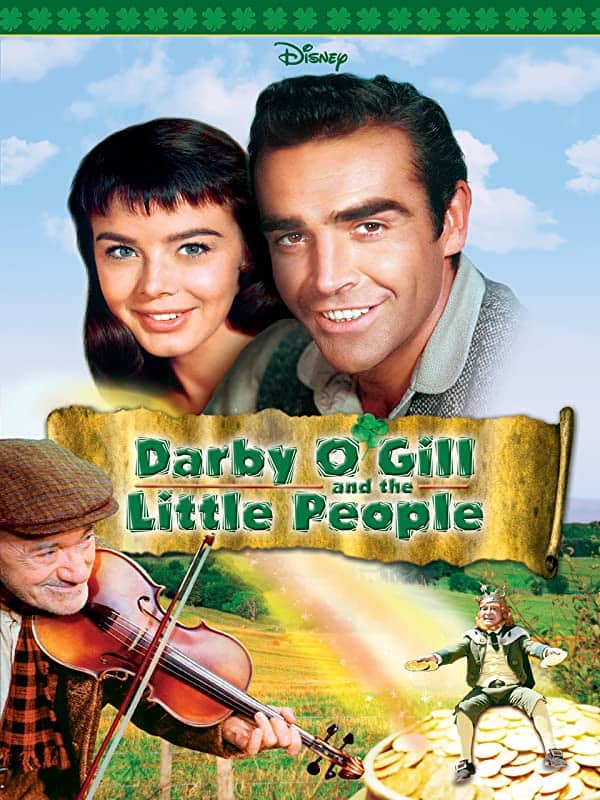
Modern culture has had a big impact on how people view leprechauns, especially on how they are portrayed on film. In 1959, the Disney movie Darby O’Gill and the Little People were released, and it somehow influenced how people think of these bearded fairies. The story is about Darby O’Gill who just lost his job. On his way home, he met Brian, a leprechaun king. Accidentally, Darby was able to bring Brian home with him. He asked the wee monarch for three wishes but the results of the wish were unexpected and bittersweet. It starred the late Sean Connery.
There's a rare disorder named after leprechauns.
Leprechaunism is a very rare disorder that’s got something to do with insulin resistance. Babies born with this disorder are very small and have issues with thriving. The National Organization for Rare Disorders or NORD found out that infants with this disorder do not gain weight and have a very low growth rate. With this, they’re expected to lack enough muscle mass and severely low body fat. It’s an extremely rare condition as there are only 50 cases known in the medical literature. Researchers and doctors prefer calling the disorder Donohue syndrome as families of patients may find Leprechaunism insulting. We are learning something new in these leprechaun facts.
Leprechauns symbolize Irish culture.
According to an Irish expert Ninian Mellamphy, leprechauns are much more than their pot of gold and green suits. Their significance traces back to Ireland’s old traditions, culture, and customs from hundreds of civilizations. Many Irish plays center around leprechauns and their existence, but it also has themes that revolve around Irish memory. The relics and oddness of Ireland’s ancient civilization are surely one of the most interesting mythical folklores in the world.
A survey reveals that many people believe that leprechauns are real.
The age-old question of whether leprechauns are real has been around for centuries. We’d hate to burst your bubble but according to sources and research, they are not. They are just fictional and fun characters that you probably enjoy seeing on St. Patrick’s Day. But if you believe that they are, you are not alone on that boat. A brand of Irish whiskey conducted a survey in 2011 asking people if they believe that leprechauns exist. Unexpectedly, results show that at least one-third of the Irish population believes in the existence of these fairies. We all have different viewpoints and in these leprechaun facts, we believe that there’s no harm in putting your faith in something that makes you feel alive.
Workers in Ireland refused to make a fence as they believe leprechauns lived in certain areas.
A 1958 article from The New York Times featured 20 workers who refused to build a fence on a particular land because they believe that it was home to leprechauns. According to the workers, the land must not be disrespected and disturbed in any way. Former president of Ireland, Éamon de Valera, was put in a tough spot on whether to punish or not the workers for their disobedience.
Shamrocks are a symbol of Ireland and leprechauns.
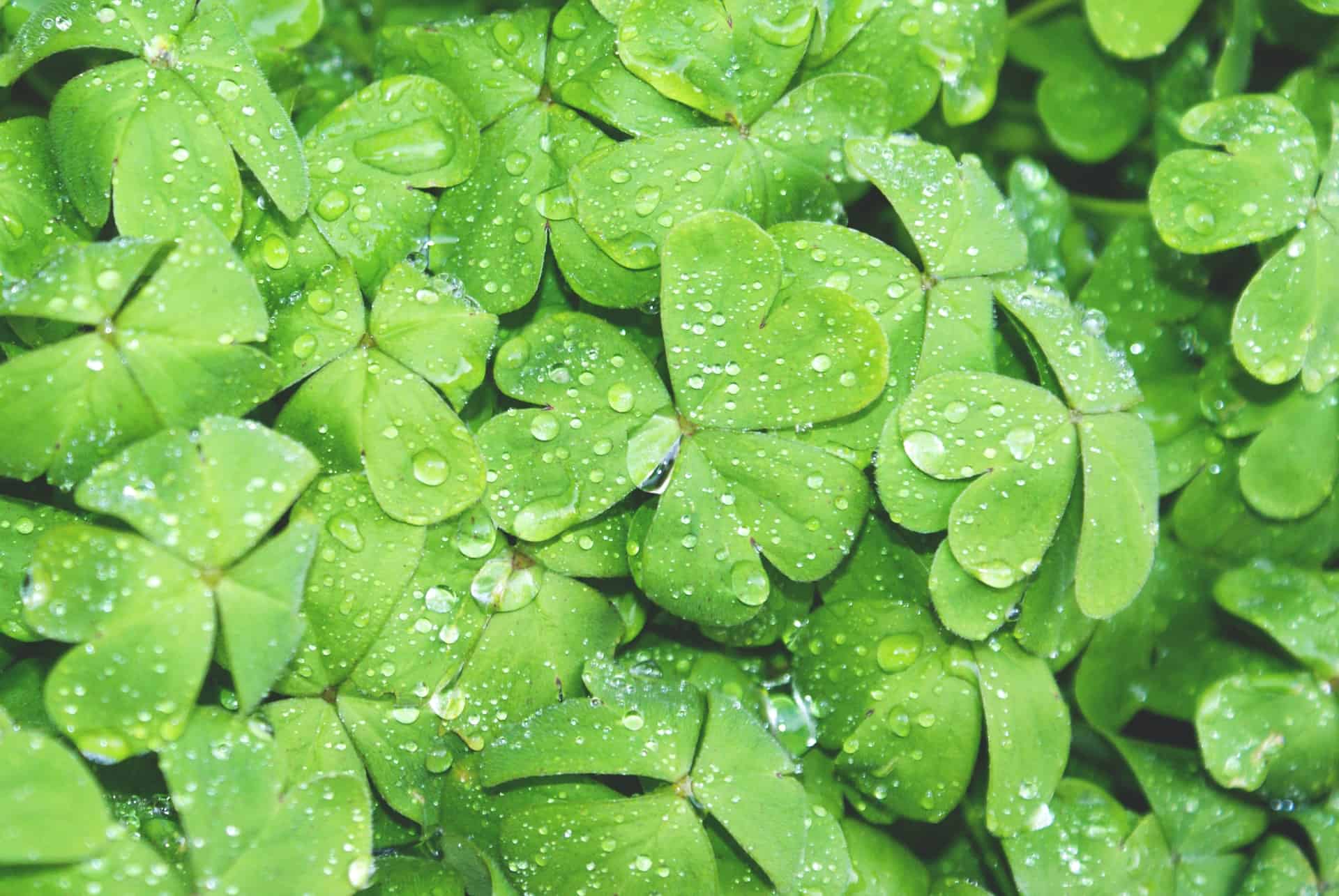
You may notice shamrocks or a four-leaf clover on leprechauns’ hats. This because it already an established symbol of St. Patrick’s day as well. According to legend, St. Patrick symbolized the Holy Trinity in the shamrock. Sources say that the first cloverleaf represents hope, the second for faith, and the third one for love. The association of St. Patrick’s Day to leprechauns explains the clover or shamrock leaf on their hats.
Ireland has something to do with a leprechaun's green outfit.
Since Ireland has grassy hills, leafy trees, and is on an island, the country is also known as the Emerald Isle. The celebration of St. Patrick’s Day also sports the green color in almost all of its festivities because of the shamrock. Apart from the leprechaun poem, Ireland’s influence eventually made the trademark of leprechaun clothes into green even though it dates back to being red. Be sure to wear something green on St. Patrick’s or be ready to get pinched. You can pinch anyone who is not in the green spirit. Truly, culture plays a big role in this interesting information that we have in these leprechaun facts.
Notre Dame's mascot is a leprechaun.
To keep up with the Irish folklore, and the university’s nickname of Fighting Irish, the University of Notre Dame chose a leprechaun as their mascot. For many years, their mascot was an Irish terrier dog. Starting 1965, however, the side-view figure of a leprechaun has been the team’s official logo. Every year, a student portrays the live version of the leprechaun. The chosen student will wear an Irish country hat and a green cutaway suit for everyone to see.
Leprechauns are featured in Harry Potter.
Also known as clauricorns in the series, leprechauns are mischievous and magical beasts. Although they’re not malicious, they have a reputation in the movie as pranksters. They are fully capable of speech and could organize coherent reasoning, they did not request the British Ministry of Magic as “beings”. Leprechauns were first seen in Harry Potter and the Goblet of Fire, mostly as a magical display during the Quidditch World Cup. Such an amazing piece of information this list of leprechaun facts.
Ireland has rich mythology that goes beyond leprechauns.
Ireland is a country not only rich in culture but also mythological creatures. We already know that leprechauns come from Irish beliefs, but there is more to their treasury of myths. They also have the Aos Si, a whole race of fairies often portrayed as stunningly beautiful. Another is the Banshee, who is not that evil but brings a scream of death far scarier than any other beings. If you happen to visit Ireland, you could know more about its fascinatingly diverse mythology.
While leprechauns are symbols of luck, a Fear Darrig is the opposite.
Another version of the popular leprechauns is the Far Darrig. They have similarities to the green, bearded fairies but they are better known as the “red men”. Why? The Far Darrig is draped in red from head to toe. Now, even though they’re small and are similar to leprechauns in appearance, they are often associated with bad luck while the latter is the opposite. Legend says that the Far Darrig visits big houses, and if you refuse to give him anything that he asks, bad luck will follow for the rest of your life. Regardless of how you see things, these leprechaun facts are surely interesting and are worth your time!
Was this page helpful?
Our commitment to delivering trustworthy and engaging content is at the heart of what we do. Each fact on our site is contributed by real users like you, bringing a wealth of diverse insights and information. To ensure the highest standards of accuracy and reliability, our dedicated editors meticulously review each submission. This process guarantees that the facts we share are not only fascinating but also credible. Trust in our commitment to quality and authenticity as you explore and learn with us.
